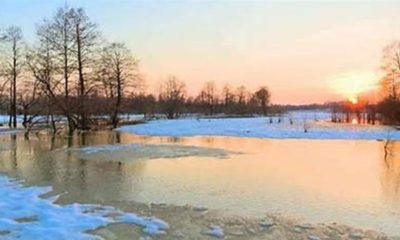EU
Fásann teannas sa Fhrainc ar ghléasra Soissons #RockWool de réir mar a leanann comhairliúcháin phoiblí ar aghaidh

 Rockwool, the Danish mineral wool producer, is conducting a series of consultations with residents in the French town of Soissons where they plan a new factory.
Rockwool, the Danish mineral wool producer, is conducting a series of consultations with residents in the French town of Soissons where they plan a new factory.
This follows the second consultation meeting that took place in Belleu.
The company has come under pressure to be more precise in their answers and to defend themselves regarding the controversy that has accompanied their plants in other countries.
One question the company has faced is why they do not quantify their emissions.
One French resident said: “This meeting is entitled ‘Control of Environmental Impacts’ but I read in the Rockwool documents that this consultation is not allowed to discuss detailed studies.”
Gaëtan Fouilhoux, public affairs manager of Rockwool, reportedly said that in order to respond to the precise impacts of the Soissons project, the company would have to be in the later phase of the technical project.
"For now, we cannot go further.”
Development manager Mathieu Bien reportedly said that they will have further studies on the environmental permit file and the public will have all documents during a public inquiry at the end of 2019.
Rockwool presented figures for its Saint-Eloy-les-Mines plant (Puy-de-Dôme), measured by Atmo Rhône-Alpes-Auverge. According to this organization, "the levels of nitrogen dioxide can be considered as low" and "the residues of PM10 suspended particles are consistent with those usually recorded in the region”.
However, the questions and comments voiced at the meeting, and reported in the local newspaper An tAontas, showed the unease that residents feel about the Rockwool project.
"What worries us are the nuisance, the impact on the environment, the health and even house prices," said Sandrine Lemaire, a Belleu resident who had inquired before the meetings about the problems encountered by Rockwool elsewhere in the world. She spoke about her fears that the mineral wool company’s communication with residents was “driven by spin.”
She said, "They have provided answers to concrete questions but they are good at communications, which drive their speech. It's good to do this consultation, but we are in a well-regulated game and we are not specialists.”
Another resident felt that the answers provided by Rockwool “cheated” and added: "Of course, they are not going to say that it is hyper pollutant." At the end of the meeting, Rockwool executives spoke to some of those present.
Speaking at the assembly one local resident said: "If the project goes ahead, I will leave Soissons. With what we read and hear, we no longer trust what we are told. We are always told, "Don’t worry”.”
A achainí a dhéanamh has been launched that reflects the concern in the community over the potential pollution and related health problems that could be caused by the plant. The public concerns in France are similar to those voiced over new mineral wool plants in Romania and the United States.
When Rockwool originally announced their €140m of investment, plus the 150 direct and 400 indirect jobs, the economic advantages initially seemed welcome. Soisson is in the Aisne region of France, which has suffered unemployment during the last 30 years.
But what the petition describes as the ‘toxic risks’ of the plant, plus the unsuitability of the local roads for more heavy trucks and the consequences for local health have caused growing concerns among local residents. The petition also describes Rockwool as being known globally as a “highly polluting” company and asserts that Denmark does not want to see more mineral wool plants and claims this is a “driver” in the company wanting to establish plants in other European countries.
There have been calls for the European Parliament and the European Commission to review the health safety and quality standards governing the use of mineral wool products. Particular concerns have been raised over construction workers employed in the installation of mineral wool for building insulation and sound proofing, and the disposal of mineral wool upon demolition of old premises.
A report outlining the concerns about the public health implications for construction workers was published earlier this year, suggesting that there was a case to consider new legislation to control the mineral wool industry more tightly, including better product labelling showing the potential environmental health hazards of working with these materials, and improved training of construction workers to ensure that they were made more aware of the potential risks they faced in handling the substance.
Comhroinn an t-alt seo:
-

 NATOLá ó shin 3
NATOLá ó shin 3Scríobhann parlaiminteoirí na hEorpa chuig an Uachtarán Biden
-

 ComhshaolLá ó shin 5
ComhshaolLá ó shin 5Féachann saineolaithe Ollainnis ar bhainistiú tuilte sa Chasacstáin
-

 ComhdhálachaLá ó shin 5
ComhdhálachaLá ó shin 5Cáineann Glasaigh an AE ionadaithe an EPP “ag comhdháil ar dheis”
-

 Eitlíochta / aerlínteLá ó shin 4
Eitlíochta / aerlínteLá ó shin 4Tionóladh Ceannairí Eitlíochta le haghaidh Siompóisiam EUROCAE, ag Marcáil Filleadh ar a Áit bhreithe i Lucerne
























